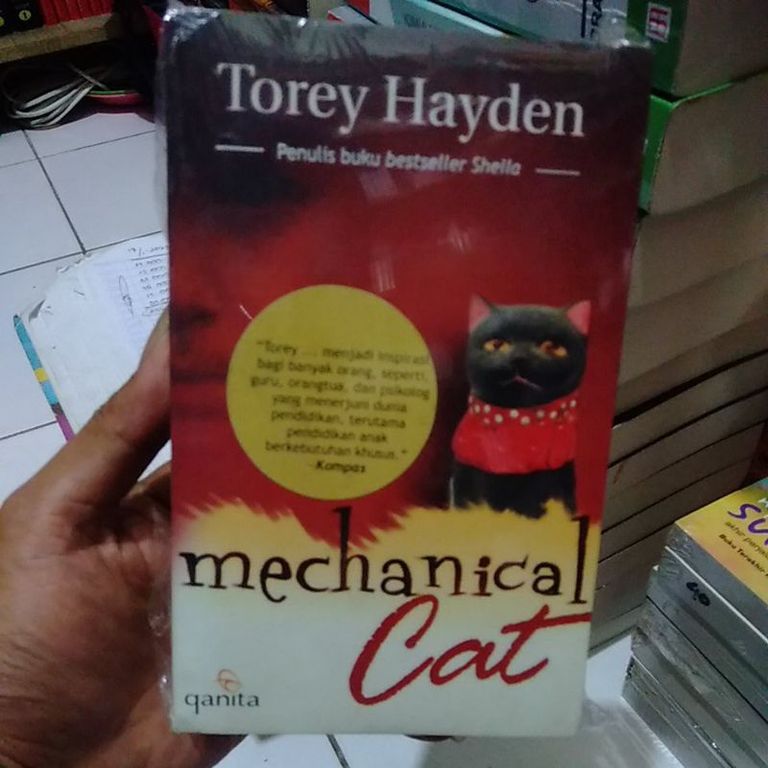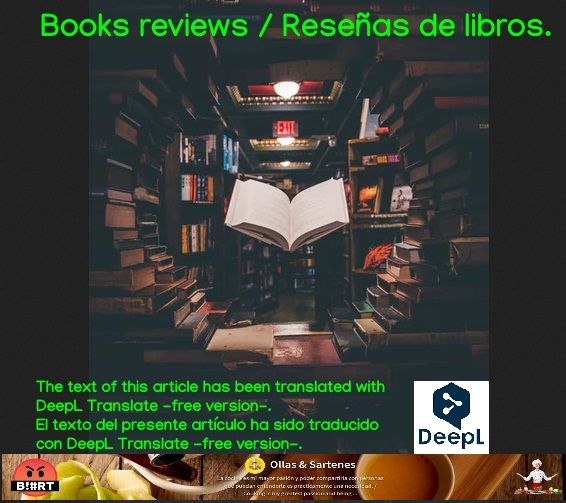
Torey Hayden is famous for writing novels about cases she has experienced firsthand, about her past as a teacher in special schools and about the most “exceptional” children she has come to know. “The Mechanical Cat” is not based on a true story, Torey Hayden explains on the site dedicated to her, but entirely fictional. “TOREY says that although the story is entirely fictional, she wrote it to explore her own experience with creativity. As a child she had a vivid imagination that was activated in much the same way as what happens to Laura in the scene in the book and continued well into her twenties. She also says that, like Laura, “as a teenager she ‘drove people crazy’ by inventing scenarios and characters and ‘testing’ them in real life to see if they were realistic.”

Torey Hayden es famosa por escribir novelas sobre casos que ha vivido en primera persona, sobre su pasado como profesora en escuelas especiales y sobre los niños más "excepcionales" que ha llegado a conocer. “El Gato Mecánico” no está basada en una historia real, explica Torey Hayden en el sitio dedicado a ella, sino enteramente ficticia. “TOREY dice que aunque la historia es completamente ficticia, la escribió para explorar su propia experiencia con la creatividad. De niña tenía una imaginación muy viva que se activaba de forma muy similar a lo que le sucede a Laura en la escena del libro y que continuó hasta bien entrados los veinte años. También dice que, al igual que Laura, “cuando era adolescente “enloquecía a la gente” inventando escenarios y personajes y “probándolos” en la vida real para ver si eran realistas”

Conor is nine years old and autistic. Or so thinks his mother, Laura Deighnton, a famous writer who entrusts him to the care of Dr. James Innes, a New York psychologist who has just moved to the Dakotas. This is in fact a temporary assignment, while waiting to find a new institution, since the old man has declared himself incapable of handling the boy's problems. However, it doesn't take long for the doctor to realize that the situation is much more complex and has repercussions for Conor's entire family, and so he decides to establish an analytical relationship with all its members. It is a pity, however, that Laura herself does not accept therapy and prefers to tell the story of her life outside the psychologist-patient relationship. A difficult life, full of events and sudden changes of course, in which the lively imagination of first a girl, then a young woman, leads her to create the figure of Torgon, a woman with sacred powers, a sort of alter ego, with whom Laura enters into a relationship bordering on the pathological that will profoundly affect not only her own, but also the life of the family.
It will not be easy for James, torn between his intuition, which he learns in sessions with the boy and Laura's stories, to understand what Conor's real problem is.
When the truth finally comes out, it will be a shocking truth with a dark twist that will take your breath away.
In this novel, underrated by many, four stories are intertwined that help to address important issues related to childhood and how it is able to influence adult life. In the plot, the protagonists' stories coexist separately and intersect at the same time, only to be resolved in a single ending. It is a work with many facets. On the one hand we find the figure of Conor, a complex child in an unclear psychological framework that will turn out to be the key to the beginning and the end of this novel.
Like a matryoshka doll, Conor's story is wrapped up in the family story, which unravels between the pieces of a marriage that has ended and of which Laura embodies the obstacle. In turn, her personal story is contained here, told on several occasions to Dr. James from her childhood marked by neglect and abuse. Her life will emerge forever changed and will alternate between dreams and illusions, wrong encounters and missed opportunities. The traumas materialize in the creation of a fictitious world in which she will take refuge all the time.
The mythical figure of Torgon represents for her a kind of guide and, even if he is the fruit of her imagination, he will be for her the only point of reference, the only certainty on which to rely and from which to draw courage and comfort. The four stories are dealt with devoting their own space to each one because they are all relevant to the purposes of the epilogue and all place the figure of the child at the center. In fact, it underlines how a child's needs are multiple, including emotional ones. The author stresses that what is most neglected is precisely emotional education, which is fundamental for achieving self-knowledge and self-esteem that are structured precisely around relational dimensions.
These deficiencies translate into behaviors that influence every stage of growth and in turn could generate the same problems in future generations, ending in a vicious cycle. Silent mistakes, such as those that occur in a family, are the ones that hurt your children the most. All means that can help stop them should be used for the good of the individual and the community. This novel will surprise you from the first pages and with each chapter you will be more and more captivated by the chain of events, with a growing tension to the rhythm of never banal themes that will remind us how childhood is too often neglected, calling for attention. Let us return to a subject that interests us all, first as children and then as parents, and touches on the past, the present and the future. I conclude with a quote: “Childhood is the ground on which we will walk all our lives”. (Lya Luft)

Conor tiene nueve años y es autista. O al menos eso piensa su madre, Laura Deighnton, una famosa escritora que lo confía al cuidado del Dr. James Innes, un psicólogo neoyorquino que acaba de mudarse a las Dakotas. En realidad se trata de un encargo temporal, a la espera de encontrar una nueva institución, dado que el anciano se ha declarado incapaz de gestionar los problemas del niño. Sin embargo, no hace falta mucho para que el médico se dé cuenta de que la situación es mucho más compleja y repercute en toda la familia de Conor y por ello decide establecer una relación analítica con todos sus miembros. Es una pena, sin embargo, que la propia Laura no acepte la terapia y prefiera contar la historia de su vida fuera de la relación psicólogo-paciente. Una vida difícil, llena de acontecimientos y cambios bruscos de rumbo, en la que la vivaz imaginación de una niña primero, y luego de una joven, la lleva a crear la figura de Torgon, una mujer con poderes sagrados, una especie de alter ego. con el que Laura entabla una relación rayana en lo patológico que afectará profundamente no sólo la suya, sino también la vida de la familia.
No será fácil para James, dividido entre su intuición, que aprende en las sesiones con el niño y las historias de Laura, entender cuál es el verdadero problema de Conor.
Cuando la verdad finalmente salga a la luz, será una verdad sorprendente con un giro oscuro que te dejará sin aliento.
En esta novela, subestimada por muchos, se entrelazan cuatro historias que contribuyen a abordar importantes cuestiones relacionadas con la infancia y cómo ésta es capaz de influir en la vida adulta. En la trama, las historias de los protagonistas conviven por separado y se cruzan al mismo tiempo, para luego resolverse en un único final. Es un trabajo con muchas facetas. Por un lado encontramos la figura de Conor, un niño complejo en un marco psicológico poco claro que resultará ser la clave del principio y del final de esta novela.
Como en una muñeca matrioska, la historia de Conor se envuelve en la familiar, que se deshace entre los pedazos de un matrimonio terminado y del que Laura encarna el obstáculo. A su vez, aquí se contiene su historia personal, contada en varias ocasiones al Doctor James a partir de su infancia marcada por el abandono y el abuso. Su vida surgirá cambiada para siempre y alternará entre sueños e ilusiones, encuentros equivocados y oportunidades perdidas. Los traumas se materializan en la creación de un mundo ficticio en el que ella se refugiará todo el tiempo.
figura mítica de Torgon representa para ella una especie de guía y, aunque sea fruto de su imaginación, será para ella el único punto de referencia, la única certeza en la que confiar y de la que sacar valor y consuelo. Las cuatro historias se abordan dedicando su propio espacio a cada una porque todas son relevantes para los propósitos del epílogo y todas sitúan la figura del niño en el centro. De hecho, subraya cómo las necesidades de un niño son múltiples, incluidas las emocionales. El autor destaca que lo que más se descuida es precisamente la educación emocional, fundamental para alcanzar el autoconocimiento y la autoestima que se estructuran precisamente en torno a dimensiones relacionales.
Estas deficiencias se traducen en comportamientos que influyen en cada etapa del crecimiento y a su vez podrían generar los mismos problemas en generaciones futuras, terminando en un círculo vicioso. Los errores silenciosos, como los que ocurren en una familia, son los que más perjudican a tus hijos. Todos los medios que puedan ayudar a detenerlos deben utilizarse para el bien del individuo y de la comunidad. Esta novela te sorprenderá desde las primeras páginas y con cada capítulo quedarás cada vez más cautivado por la cadena de acontecimientos, con una tensión creciente al ritmo de temas nunca banales que nos recordarán cómo con demasiada frecuencia se descuida la infancia, llamando la atención. Volvamos a un tema que nos interesa a todos, primero como niños y luego como padres, y toca el pasado, el presente y el futuro. Concluyo con una cita: " La infancia es el terreno sobre el que caminaremos durante toda nuestra vida ". (Lya Luft)

“The Mechanical Cat” is an easy to read novel, the structure is very fluid. Laura's flashbacks are inserted very simply and alternate skillfully with the continuation of the actual narrative. During the reading the doubt may arise whether too much space has been given to the narrative of the Kingdom and Torgon's story, but the ending gives the possibility to answer this question in the negative, pleasantly leaving a veil of unexpected surprise.

“El gato mecánico” es una novela de fácil lectura, la estructura es muy fluida. Los flashbacks de Laura se insertan de forma muy sencilla y se alternan hábilmente con la continuación de la narración real. Durante la lectura puede surgir la duda de si se ha dado demasiado espacio a la narración del Reino y a la historia de Torgon, pero el final da la posibilidad de responder negativamente a esta pregunta, dejando gratamente un velo de sorpresa inesperada.
Source image / Fuente imagen: Torey Hayden.

Mis Blogs y Sitios Web / My Blogs & Websites: